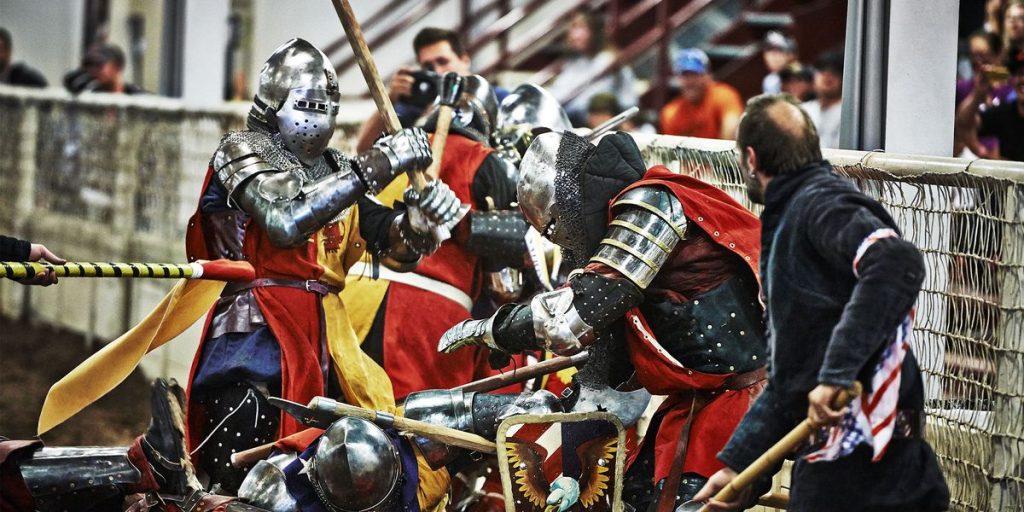Step back in time and imagine the clashing of swords, the chanting of soldiers, the dramatic yet strategic dances of knights, and the vibrant roar of spectators. This isn’t a Hollywood set nor a fragment of a novelist’s imagination, it’s a picture of medieval combat recreation – a rich and engrossing hobby enjoyed by enthusiasts worldwide.
The Heart of Medieval Combat Recreation
Medieval combat recreation, also known as historical European martial arts (HEMA), is more than just wearing armor and wielding swords. It’s about accurately portraying the art, skill, strategy, and culture behind medieval combat. Enthusiasts meticulously study historical texts, diagrams, and manuals to understand and recreate the techniques used by knights of old.
These reenactments are not mere theatrics. They’re a form of education and a living testament to our past. The experiences create a tactile connection to history, transforming abstract facts into tangible understanding. Onlookers become spectators of a living museum, the thrill of the battle coupled with the allure of antiquity, creating an unforgettable spectacle.
Not only does it satisfy the thirst of history buffs, but it also appeals to martial arts practitioners, providing a unique blend of history, culture, and physical prowess. It’s a fascinating union of past and present, where the chivalry of the old world meets the curiosity of the new.

Gear and Techniques: A Deep Dive into Authenticity
Equally significant as the combat techniques are the gear and attire. Medieval combat recreation enthusiasts go to great lengths to ensure their equipment mirrors that of medieval knights. Helmets, swords, shields, and chain mail – each piece painstakingly crafted or sourced to match historical specifications.
The techniques utilized during reenactments are rooted in historical combat manuals. Fencing, grappling, and various forms of weapon-based combat are all part of the repertoire. But this isn’t about brute force; it’s a study of strategy, precision, and timing. Every swing, every block, every maneuver is a well-rehearsed dance, a testament to the skill of medieval warriors.
Each combat scenario, from one-on-one duels to full-scale battles, encapsulates the grit and valor of medieval warfare. Safety is of paramount importance, and although the combat is intense, the goal is to recreate, not injure, making medieval combat recreation a fun and safe way to experience history firsthand.
Building Communities Through Historical Recreation
Beyond the thrill of combat, medieval combat recreation also fosters a robust and inclusive community. Many enthusiasts are part of reenactment groups, participating in regular training sessions, regional events, and even international tournaments.
The sense of camaraderie within these groups is as palpable as the anticipation before a staged battle. Sharing knowledge, honing skills, and fostering friendships are all part of the experience. Involvement in medieval combat recreation isn’t just a hobby; for many, it’s a passion that transcends age, background, and profession.
Medieval combat recreation is more than the sum of its parts. It’s an intricate blend of history, martial arts, culture, and community. It offers a unique lens through which to view our past, providing a tactile connection to the knights of yore and fostering a sense of shared heritage.

Conclusion
Medieval combat recreation offers a journey into a bygone era. A time when honor was earned on the battlefield, and the clash of steel echoed through the ages. It provides a unique blend of history, combat arts, and camaraderie, making it a fascinating hobby for enthusiasts across the globe.
As we continue to delve into the depths of history, the rich tapestry of medieval combat unfurls, revealing a mesmerizing and captivating world that is as educational as it is entertaining. The art of medieval combat recreation remains a testament to our past, a beacon of our shared heritage, and an ongoing journey into the heart of history itself.
